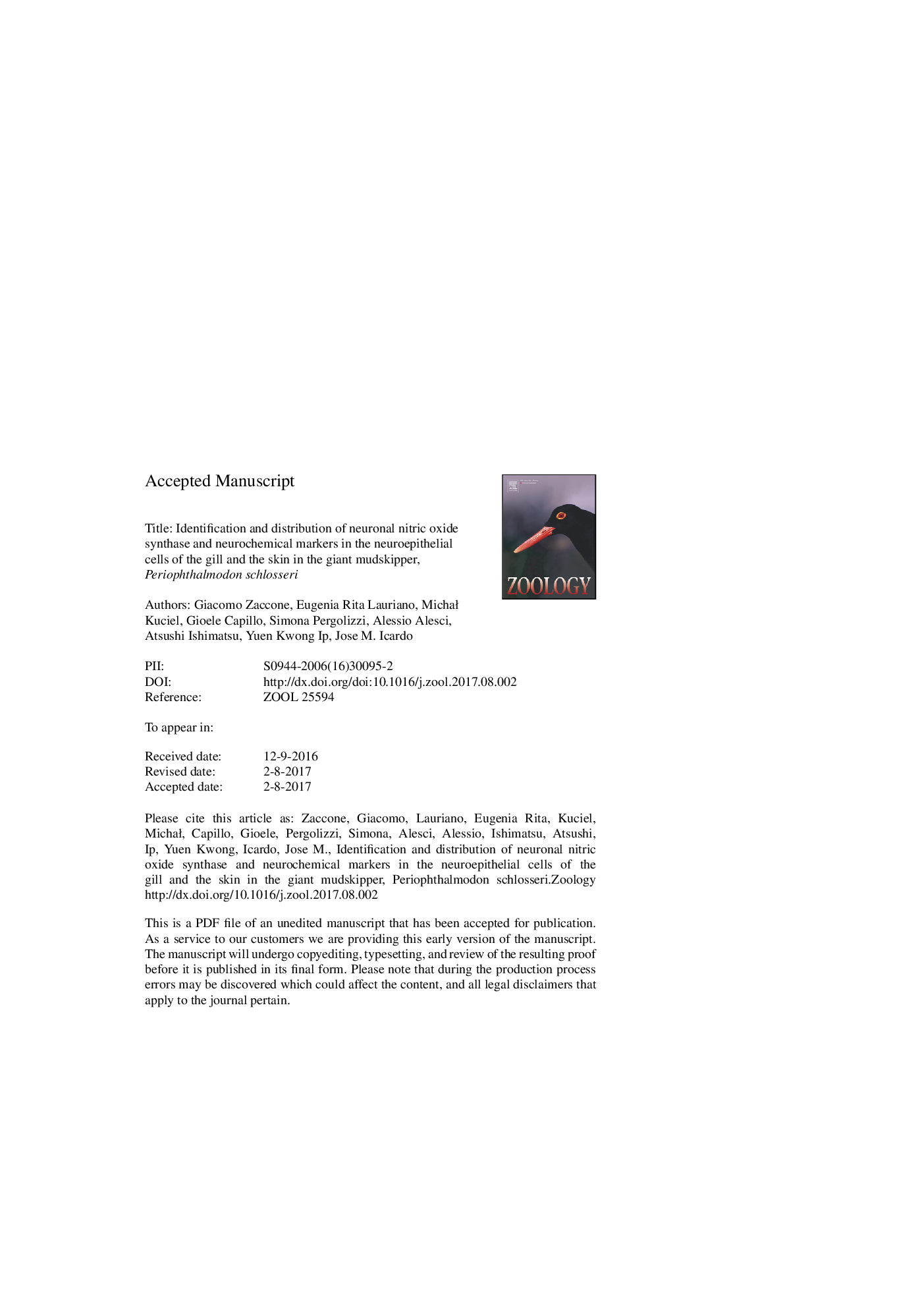| Article ID | Journal | Published Year | Pages | File Type |
|---|---|---|---|---|
| 8627161 | Zoology | 2017 | 28 Pages |
Abstract
Mudskippers are amphibious fishes living in mudflats and mangroves. These fishes hold air in their large buccopharyngeal-opercular cavities where respiratory gas exchange takes place via the gills and higher vascularized epithelium lining the cavities and also the skin epidermis. Although aerial ventilation response to changes in ambient gas concentration has been studied in mudskippers, the localization and distribution of respiratory chemoreceptors, their neurochemical coding and function as well as physiological evidence for the gill or skin as site for O2 and CO2 sensing are currently not known. In the present study we assessed the distribution of serotonin, acetylcholine, catecholamines and nitric oxide in the neuroepithelial cells (NECs) of the mudskipper gill and skin epithelium using immunohistochemistry and confocal microscopy. Colocalization studies showed that 5-HT is coexpressed with nNOS, Na+/K+-ATPase, TH and VAChT; nNOS is coexpressed with Na+/K+-ATPase and TH in the skin. In the gill 5-HT is coexpressed with nNOS and VAhHT and nNOS is coexpressed with Na+/K+-ATPase and TH. Acetylcholine is also expressed in chain and proximal neurons projecting to the efferent filament artery and branchial smooth muscle. The serotonergic cells c labeled with VAChT, nNOS and TH, thus indicating the presence of NEC populations and the possibility that these neurotransmitters (other than serotonin) may act as primary transmitters in the hypoxic reflex in fish gills. Immunolabeling with TH antibodies revealed that NECs in the gill and the skin are innervated by catecholaminergic nerves, thus suggesting that these cells are involved in a central control of branchial functions through their relationships with the sympathetic branchial nervous system. The Na+/K+-ATPase in mitochondria-rich cells (MRCs), which are most concentrated in the gill lamellar epithelium, is colabeled with nNOS and associated with TH nerve terminals. TH-immunopositive fine varicosities were also associated with the numerous capillaries in the skin surface and the layers of the swollen cells. Based on the often hypercapnic and hypoxic habitat of the mudskippers, these fishes may represent an attractive model for pursuing studies on O2 and CO2 sensing due to the air-breathing that increases the importance of acid/base regulation and the O2-related drive including the function of gasotransmitters such as nitric oxide that has an inhibitory (regulatory) function in ionoregulation.
Related Topics
Life Sciences
Agricultural and Biological Sciences
Animal Science and Zoology
Authors
Giacomo Zaccone, Eugenia Rita Lauriano, MichaÅ Kuciel, Gioele Capillo, Simona Pergolizzi, Alessio Alesci, Atsushi Ishimatsu, Yuen Kwong Ip, Jose M. Icardo,
